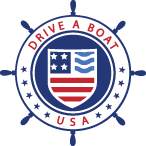Everything You Need to Know About Safe Boating with Dogs
Are you considering taking your dog with you while boating? As of 2024, nearly 40% of U.S. households own a dog. This translates to about 65 million households with dogs in the United States. If only half of these dogs go boating at some point during their lifetime, that’s a lot of dogs out on the water!
Nearly all U.S. pet owners (97%) say their pets are part of their family, according to a new Pew Research Center survey.
So, just as it’s vitally important to keep children safe while boating, it’s also important to do everything you can to keep your doggy friend safe and happy too.
Safety tips for boating with a dog
There are things you can do to keep your dog safe both before and after they get in the boat.
Before your dog gets on board
- Make sure your dog can swim. Don’t assume all dogs are natural swimmers. Introduce your dog to water gradually and let them explore at their own pace. You can tell if they are comfortable in the water if they are relaxed, playful, paddling naturally and breathing regularly.
Tips for teaching your dog to swim
-
-
- Start in shallow water.
- Use positive reinforcement.
- Get in the water with them.
- As your dog becomes more comfortable, gradually increase the depth of the water.
- Point them towards the exit while swimming together. If your dog knows how to find their way out of the water and can do so without panicking, it shows they are comfortable with swimming.
- Pay attention to your dog’s body language. If they seem scared or overwhelmed, return to shallower water or dry land to help them calm down before trying again.
- Use a doggy life jacket, especially in deeper water or if your dog is not a natural swimmer.
-
- Get a properly fitting life jacket for your dog. Even strong swimmers can tire in rough water, or if your boat capsizes and they fall overboard and cannot be quickly rescued. A life jacket is key for safety. Make sure it fits snugly but allows movement. Let your dog wear the life jacket a few times to get used to it before going boating.
Features of an effective dog life jacket
-
-
- Full-torso coverage: This provides better buoyancy and keeps your dog afloat more effectively.
- Bright colors: Vibrant colors make your dog easier to spot in the water.
- Reflective accents: These enhance visibility, especially in low-light conditions.
- Durable top handle: A strong handle allows you to easily lift your dog out of the water if needed.
- Sturdy D-ring: This allows for leash attachment, making the life jacket more versatile.
-
Taking your dog on a boat
1. Introduce your dog to your boat before going for a trip. This can involve teaching basic safety commands like “sit,” “stay,” and “on/off boat”. Let them explore the boat while it’s docked and get used to the engine noise. This will help control your dog’s behavior and prevent accidents.
2. Make sure your dog is fully comfortable when you launch your boat.
Signs your dog is comfortable on the boat
-
-
- Relaxed body language: a comfortable dog will exhibit a relaxed posture, with a loose, wagging tail and calm demeanor.
- Natural movement: a dog that moves around the boat confidently, without excessive caution or hesitation, is likely feeling comfortable.
- Normal breathing: observe your dog’s breathing pattern. If they are breathing normally and not panting excessively, it suggests they are not stressed.
- Playfulness: a dog that engages in play or shows interest in toys while on the boat is likely feeling comfortable and secure.
- Willingness to explore: if your dog is curious about their surroundings and willing to explore different parts of the boat, it’s a good sign of comfort.
- Eating and drinking normally: a dog that accepts food and water while on the boat is typically content.
- Resting or sleeping: if your dog is able to relax enough to rest or even fall asleep on the boat, it’s a strong indicator of comfort.
- Positive reactions: look for signs of enjoyment, such as a relaxed facial expression or seeking attention from you.
- Absence of stress signals: watch for the absence of stress indicators like excessive drooling, shaking, whining, or attempting to hide. If your dog appears tense or rigid, they may not be at ease.
-
3. The first few times you go boating with your dog, start with shorter trips. It’s also a good idea to provide a safe space on the boat, and use positive reinforcement to create positive associations with boating.
4. Remember to bring all necessary supplies:
-
-
- Fresh water and food
- Sunscreen for dogs
- Paw protection for hot surfaces
- Non-slip mats
- Leash and harness
- Pet first aid kit
- Portable potty system for longer trips.
-
5. Provide shade and monitor for overheating. Boats can get very hot, so make sure your dog has a shaded area to rest.
6. Keep a close eye on your dog at all times. Consider using a leash attached to a secure point on the boat to prevent falls overboard.
7. Have a plan for emergencies, including what to do if your dog goes overboard.
8. Take breaks as needed and provide opportunities for your dog to relieve themselves if you don’t have a system in place on board.
Dogs around boats
Safety is just as important on the pier and around boat trailers as it is out on the water.
- Never let your dog ride in a boat while it is being trailered.
- Always keep your dog on a leash near docks and piers.
- Be extra careful around vehicles with trailers as drivers may have limited visibility.
- If your dog gets into the water near a boat, make sure you take every precaution to keep them away from the deadly blades of boat propellers.
- Do not involve your dog in towed water sports.
Laws related to boating with dogs
While there are no federal laws specifically governing dogs on boats in the US, there are some state and local regulations to be aware of:
- Life jackets: Some states require dogs to wear life jackets on boats, just like humans. Even where not legally required, it’s strongly recommended for safety.
- Leash laws: Certain states or local jurisdictions may require dogs to be leashed while on boats, especially in public waterways or marinas.
- Waste disposal: Proper disposal of dog waste is typically required, with regulations against dumping it into waterways.
- Vaccinations: Some areas may require proof of current vaccinations, particularly rabies, for dogs on boats.
- Breed restrictions: A few localities have breed-specific legislation that could affect which dogs are allowed on boats in certain areas.
- Protected areas: National parks, wildlife refuges, and some state parks may have restrictions on pets in boats to protect local ecosystems.
- Commercial vessels: There may be specific rules for dogs on commercial boats or ferries, which can differ from private vessel regulations.
- Local ordinances: Individual lakes, rivers, or coastal areas might have their own rules regarding dogs on boats.
It’s important to check the specific regulations for the area where you’ll be boating, as they can vary significantly between locations. Many of these rules are designed to provide safety for both humans and animals, as well as to protect the environment. Always consult local marine law enforcement or park rangers for the most up-to-date and accurate information for your specific boating location.
Get your boating license with Drive A Boat USA
By following the above guidelines, you can get ready to enjoy a safe and fun boating experience with your furry friend.
Always supervise your dog while they are in, near or on the water to make sure they are safe and comfortable.
To learn more about boating safety, join thousands of other boaters in New York, California, Florida and elsewhere who got their state-approved boating licence at Drive A Boat USA!

